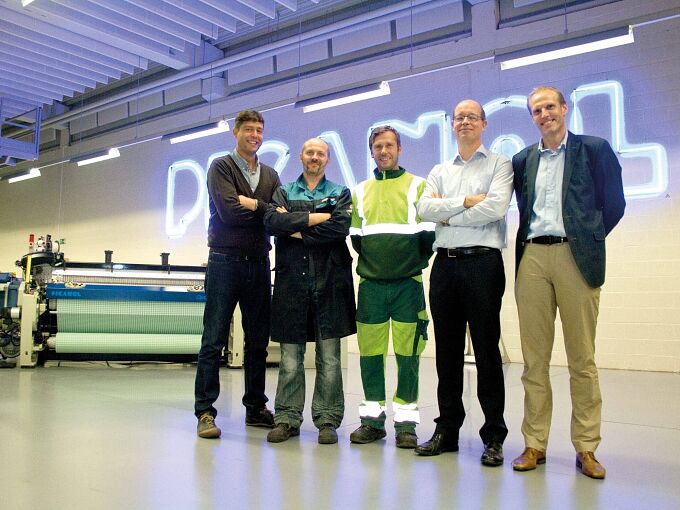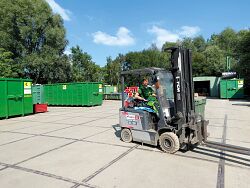The Picanol Group began implementing a Total Waste Care system 10 years ago with the aim of rendering waste streams clearer both physically and financially. In the end, this effort resulted in better recycling, a firm control over costs and more cleanliness and tidiness.
Picanol has been carrying out Total Waste Care for 10 years
Total Waste Care for 10 years
“Ten years ago just about everyone took care of waste,” explains Peter Braeckevelt, Picanol Group EHA Manager. “Each forklift truck driver would sometimes move a bin, everything was scattered throughout the company and the system was anything but clear. It was impossible for us to say whether we were complying with the law, if we paid the right price for waste management and how we should break down the costs across the company's various departments. A change and an improvement were needed!"
Picanol's waste stream in figures
“The Picanol Group has two main branches: Picanol and Proferro. Picanol makes looms while Proferro is our foundry and finishing department. Vanheede removes all Proferro's foundry sand which is sorted at source. This specific waste stream is reused as construction material and not included in the Total Waste Care programme. However, all other waste streams of the branch are managed within the framework of the Total Waste Care programme. This includes wood, paper and cardboard, residual waste, PMD, cooling emulsion, small hazardous waste, chemical waste, PE foil, household glass and textile waste.”
Pieter Vandenberghe from Vanheede is able to put figures on these various operations. “In 2013, 97% of foundry waste was recycled and reused as construction material through the intermediary of processing plants certified to this effect.”
The Total Waste Care programme means that more than 2,000 tonnes of business waste is able to be sorted at source every year at the Picanol site in Ypres. Some 60 different waste streams are subject to sorting at source and were taken away to certified processing plants. This final treatment is divided into different groups:
- Reuse and recycling: 63.5%
- Specific treatment of waste: 21%
- Residual waste (sorting line): 10%
- Landfill: 4%
- Incineration with energy recovery: 1.5%
A straightforward approach
“The principle is straightforward,” explains Peter Braeckevelt. “Everyone at work is required to sort their waste and the means to do that are made available. Waste bins are provided at a workstation level. They are emptied in waste collection zones and finally make their way to large collection bins. All these steps are carried out within the buildings. It is only at this stage that our man-on-site (MOS) comes into action. Men-on-site are Vanheede members of staff who ensure these large bins are emptied in due course and in the correct manner into the recycling bins outside the buildings. To do this, they drive a little bin train enabling them to move these containers efficiently and they also have a ‘roll-packer’. This enables them to compress and compact waste in a dumpster. This measure has the advantage of increasing the weight per dumpster and reducing the number of trips that need to be made. In all, we are talking about some 1,000 small bins and 200 large ones. At the beginning of the project it wasn't easy to justify the cost of two men-on-site, looking after nothing but waste. Now, some 10 years later, the advantages of this approach are so obvious that a return to the old system would be unthinkable.”
The system offers many advantages
“In the end the system automatically pays for itself because the number of people dealing with waste has been drastically reduced. Recycling is of better quality which results in more cleanliness and tidiness. We also receive a weigh-in slip for everything that leaves the business, we know where the waste will end up and we know what it will be used for. The MOS records everything and submits a report at the end of the month. Assistant Environmental Coordinator Joris Vaneechoutte can also accurately break down the costs department by department. This break down of costs also results in optimisation. It means the departments can visualise the financial impact of their efforts. Over the last 10 years, the amount of costly residual waste per loom manufactured has dropped by more than 30 kg! Vanheede was not involved in the initial launch of global waste management but we opted for their Total Waste Care solution in October 2009 on a cost, flexibility and continuity basis. I would hold up as the only proof needed the fact that the men-on-site and the truck driver who transports the bins are still the same people today.”


